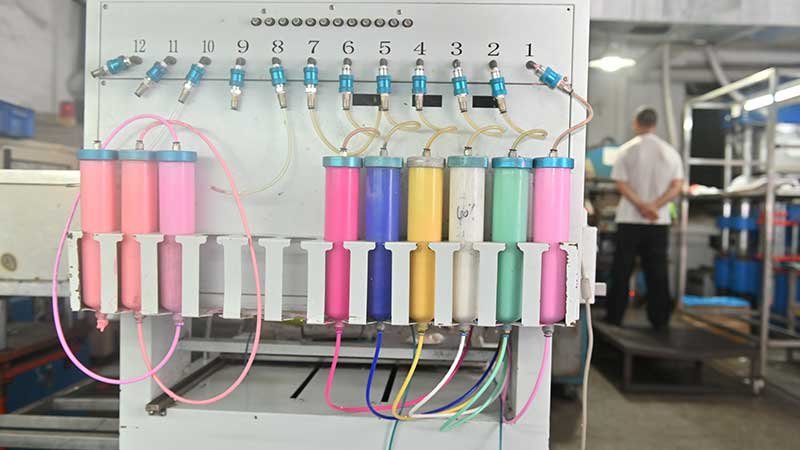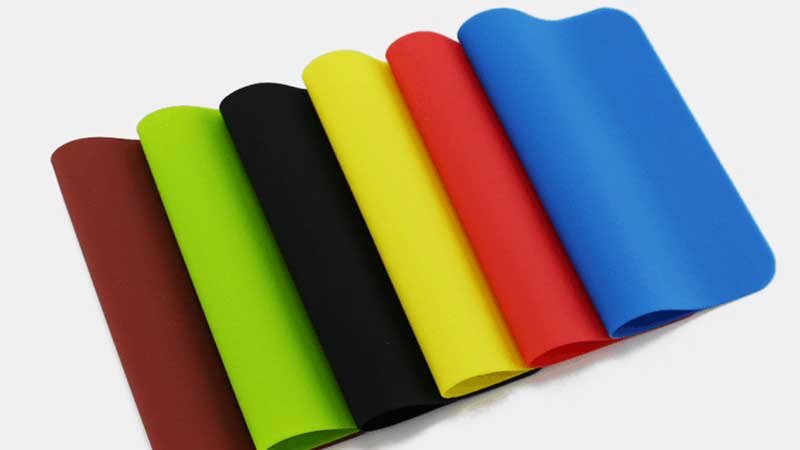Coloring silicone can be a tough challenge due to its non-reactive nature, making it difficult to achieve consistent, vibrant hues. This struggle can lead to issues like color bleeding, fading, or uneven distribution, which not only increase production costs but also risk lowering product quality and damaging your brand’s reputation.
Coloring silicone is possible and effective when you understand the right methods. By using compatible colorants, ensuring proper mixing, and employing the correct techniques, you can achieve the desired hue without compromising the material’s properties.
This guide will walk you through everything you need to know about coloring silicone efficiently and effectively.

What Are the Best Methods for Coloring Silicone?
When it comes to coloring silicone, you have several options, but not all methods are created equal. The best approach depends on your specific needs, including the type of silicone you are working with and the desired outcome.
Pigment Masterbatch
One of the most common methods is using a pigment masterbatch. This involves pre-mixing the colorant with silicone before the molding process. It’s ideal for achieving consistent color throughout the product. This method is widely used in the medical and food-grade silicone industries due to its precision and safety.
Liquid Silicone Rubber (LSR) Coloring
For liquid silicone rubber (LSR), you can use liquid colorants specifically designed for LSR. This method allows for precise control over the color intensity and is particularly useful for custom orders where unique colors are required. The colorant is mixed directly into the liquid silicone before the curing process.
Surface Coating
Another method is surface coating, where you apply color to the surface of the silicone after molding. This technique is suitable for products where surface aesthetics are important, but it may not be as durable as other methods. However, advancements in coating technology have improved durability, making it a viable option for some applications.
Powder Pigments
Powder pigments are another option, particularly for those who want to mix colors manually. These are typically mixed with silicone oil or a solvent to create a paste before being added to the silicone. This method offers flexibility in color blending but requires precise mixing to avoid inconsistencies.
Which Colorants Are Best for Silicone?
Choosing the right colorant is crucial for successful silicone coloring. The wrong choice can lead to poor color adherence, fading, or even a compromised silicone structure.
Organic vs. Inorganic Pigments
You need to decide between organic and inorganic pigments. Organic pigments offer brighter, more vibrant colors but may not be as stable under UV light or high temperatures. In contrast, inorganic pigments are more stable but offer less intense colors. Depending on your product’s intended use, you might prioritize one over the other.
Silicone-Compatible Colorants
It’s essential to use silicone-compatible colorants. These are specially formulated to bond with the silicone, ensuring even color distribution and long-lasting vibrancy. Standard dyes or pigments designed for other materials might not mix well and can lead to separation or bleeding over time.

How to Mix Colorants with Silicone?
The mixing process is critical for achieving the desired color consistency. Improper mixing can result in uneven color distribution, streaks, or spots.
Manual Mixing
For small batches, manual mixing is a viable option. Ensure you mix the colorant thoroughly with the silicone base. This can be done using a spatula or a mixing machine. The key is to mix slowly to avoid introducing air bubbles, which can affect the final product’s appearance.
Machine Mixing
For larger batches, machine mixing is recommended. This ensures a more consistent mix and can handle higher volumes of silicone. There are specialized machines designed to mix colorants into silicone, which can save time and reduce errors.
Curing Process
After mixing, it’s crucial to properly cure the silicone. The curing process can affect the final color, as some pigments may change under heat. Ensure you follow the manufacturer’s guidelines for curing times and temperatures to maintain the color integrity.
What Are the Common Challenges in Coloring Silicone?
Coloring silicone can be straightforward, but there are challenges you should be aware of.
Color Fading
One common issue is color fading over time. This is particularly prevalent in products exposed to UV light or high temperatures. Using UV-stable pigments and properly curing the silicone can help mitigate this issue.
Inconsistent Color
Inconsistent color can occur due to improper mixing or using incompatible colorants. To avoid this, ensure you follow the recommended mixing ratios and use only silicone-compatible colorants.
Surface Imperfections
If you choose surface coating as your coloring method, you might encounter surface imperfections like peeling or cracking. This can be due to improper application or using a low-quality coating. Make sure the silicone surface is clean and primed before applying the coating to ensure better adhesion.

Can You Customize Colors for Silicone Products?
Yes, you can customize colors for silicone products, but it requires careful planning and execution.
Color Matching
If you need to match a specific color, you can work with your colorant supplier to create a custom blend. Color matching is a precise process that involves mixing different pigments to achieve the exact hue you want. This is especially important for branding purposes or when you need to match other components.
Multi-Colored Products
For multi-colored products, you might need to use multiple colorants or combine different coloring methods. This can be more complex, but it allows for creative designs and unique product offerings.
Testing and Quality Control
Before mass production, it’s crucial to test the colored silicone to ensure it meets your standards. This includes testing for color fastness, durability, and consistency. Implementing a rigorous quality control process can help identify and resolve issues early on.
Conclusion
Coloring silicone might seem challenging, but with the right methods, colorants, and techniques, you can achieve vibrant, durable, and consistent results. Whether you choose pigment masterbatch, liquid colorants, or surface coating, the key is to understand your specific needs and follow best practices for mixing and curing. This will not only enhance your products’ appeal but also ensure they stand up to customer expectations and industry standards.